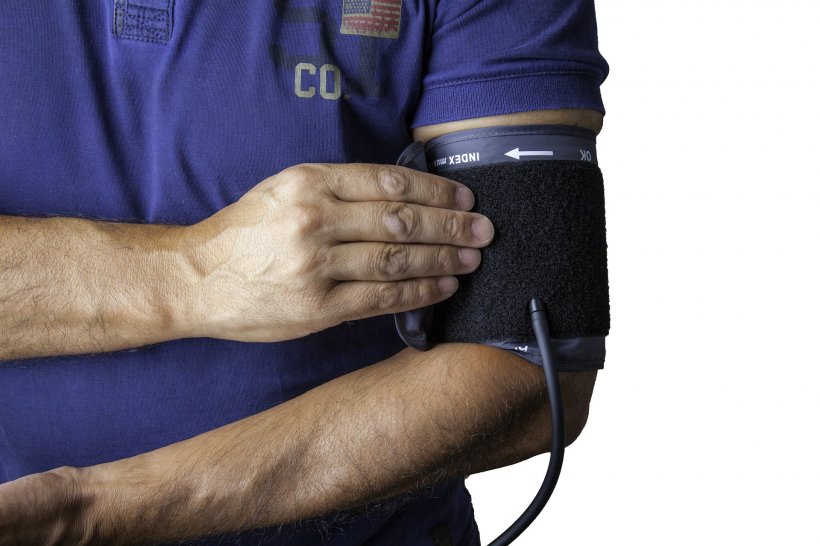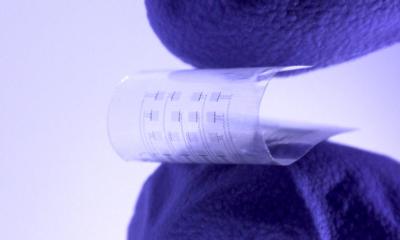
News • Diabetes
Remote blood pressure monitoring via app shows promise
People with both diabetes and uncontrolled high blood pressure who used a smartphone app to monitor their blood pressure remotely, get tips on healthful living and connect with a health coach saw significant declines in their blood pressure within six weeks.
At six weeks, study participants’ systolic blood pressure (the top number in a blood pressure reading) declined by an average of 5.4 mm Hg and diastolic pressure (the bottom number) declined by 3.5 mm Hg on average compared with their levels at study entry, said Bimal R. Shah, MD, chief medical officer of the health technology company Livongo, assistant consulting professor at Duke University School of Medicine, and lead author of the study. “We have shown in this pilot study that, in a population with both diabetes and high blood pressure, six weeks of remote blood pressure monitoring—accompanied by education about high blood pressure management and access to health coaches—can significantly improve blood pressure control,” Shah said. “The improvement is comparable to what doctors would expect to see if a patient had started taking a low to moderate dose of a high blood pressure medication.”
Blood pressure is the measure of the force of blood pushing against blood vessel walls. When the blood vessels become stiff or narrow, the heart has to work harder to pump blood out to the body, leading to an increase in blood pressure. Over time, uncontrolled high blood pressure increases risk for complications such as heart disease, stroke and kidney disease.
About 1 in 2 U.S. adults has high blood pressure, Shah said, and it’s estimated that only about 54 percent of them have the condition under control. Studies have shown that home blood pressure monitoring, also known as self-measured blood pressure monitoring, can improve adherence to treatment and lead to better outcomes for patients with high blood pressure. High blood pressure is common in people with diabetes. People who have both of these chronic conditions have a fourfold increased risk for heart disease, stroke and kidney disease compared with people who have only one of them, Shah said.
The results of the pilot study provide initial data that a holistic program [...] can have a significant beneficial effect on blood pressure levels
Bimal R. Shah
The 708 study participants had an average age of 54 years and 53 percent of them were women. At study entry, all of them had diabetes and 63 percent had blood pressure higher than 130/80 mm Hg, the threshold for a diagnosis of stage 1 high blood pressure according to the revised guideline issued in 2017 by ACC and the American Heart Association (AHA). A subgroup (28.7 percent) had blood pressure higher than 140/90 mm Hg, the threshold for stage 2 high blood pressure in the ACC/AHA guideline.
All participants received a blood pressure monitor and cuff that connected wirelessly with Livongo’s smartphone app. When participants measured their blood pressure with their smartphones nearby (which they did an average of four times a week), the readings were automatically transmitted to Livongo’s computer servers.
After each reading, participants could open the app to review the results and get tips on managing their blood pressure by reminding them to take their medications, follow a healthy eating pattern, be more physically active and drop a few pounds in weight. The app also enabled them to compare their blood pressure readings over time, schedule a call with a health coach, and share their results with family members, friends or health care providers.
At six weeks, 40.8 percent of participants had blood pressure below 130/80 mm Hg, while 23.6 percent still had blood pressure higher than 140/90 mm Hg. The study’s primary endpoint was the reduction in systolic blood pressure at six weeks. The secondary endpoint was the reduction in diastolic blood pressure at six weeks. “This was a short study to demonstrate the proof of concept,” Shah said. “With longer follow-up and further coaching, we expect that more participants will see durable blood pressure reductions.”
Participants who had the highest blood pressure at baseline were the most likely in multivariable modeling to see reductions in both systolic and diastolic pressure by the end of the study, Shah said. This suggested that regular blood pressure monitoring and awareness of blood pressure levels helped participants remember to take their medication as directed as well as undertake behavioral and lifestyle changes known to improve blood pressure control, he said.
A limitation of the study is that it did not include a control group that received usual care for high blood pressure, Shah said. He and his colleagues are planning to conduct a trial in which patients are randomly assigned to either use the app or receive usual care. “The results of the pilot study provide initial data that a holistic program—bringing together remote blood pressure monitoring with patient education and health coaching—can have a significant beneficial effect on blood pressure levels,” he said. “But it will be important to validate these findings in a randomized trial.”
Source: American College of Cardiology
08.03.2019











